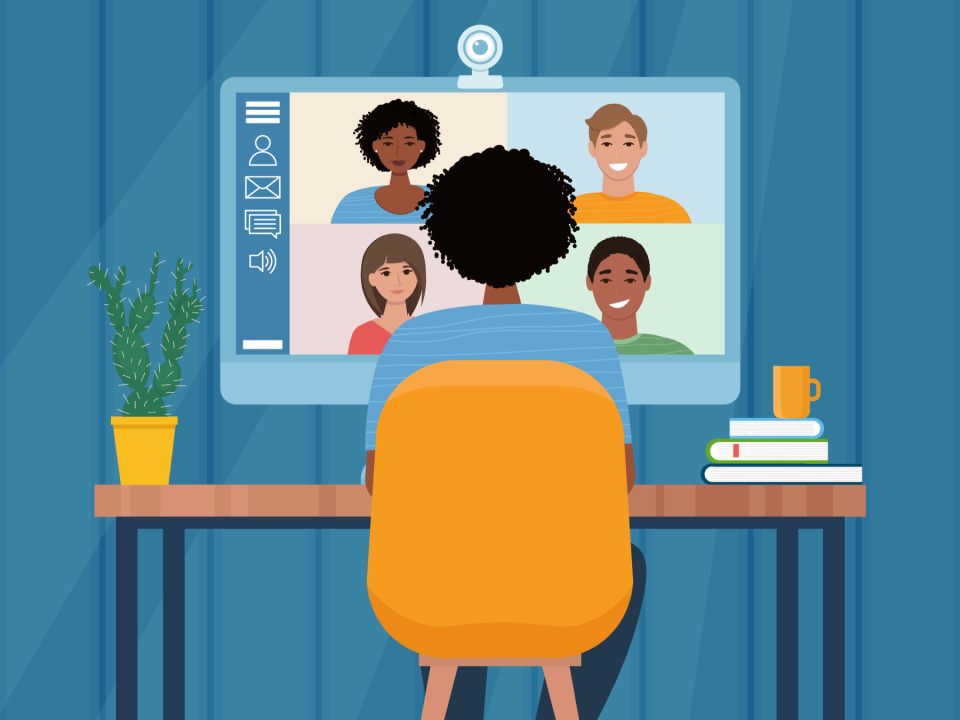This video will cover:
00:06 What is “think-pair-share” and why does it work
00:57 How to translate the “think-share-pair” teaching strategy online
02:59 Key lessons from using the “think-pair-share” teaching model in a digital environment

This video will cover:
00:06 What is “think-pair-share” and why does it work
00:57 How to translate the “think-share-pair” teaching strategy online
02:59 Key lessons from using the “think-pair-share” teaching model in a digital environment
Hello, my name is José Guzman and I am an assistant teaching professor at the University of Washington.
My classes tend to be very, very interactive. I teach by questioning.
During that in-class time, I normally talk for a few minutes, and then ask a question. I give my students a couple of minutes to think about it – oftentimes I use clickers or Poll Everywhere to make them commit to an answer, but then there is always that component of: “Talk to the people that you have around and discuss the question.”
After that, I will randomly call a student who shares the conversation that was going on with the rest of the class, and then I provide feedback. And that is the think-pair-share strategy.
I use this approach because we know that when students talk to each other, when they are engaged in conversations, explaining stuff to their peers, and sometimes arguing, that is when magic happens. That is when they learn. And we have a lot of evidence for that.
Now that we [have] moved online, and I am teaching using Zoom primarily, my question was: how do I translate this peer-instruction strategy to an online environment?
We came up with this model in which we use breakout rooms in Zoom and a Google Doc.
The Google doc contains all the questions that I want to ask during the session. It includes, in addition to the specific questions, plots and diagrams and sketches, all the information that the students need to answer those questions. You can think of it like a traditional worksheet, but in Google Docs.
And that “worksheet” is replicated as many times as the number of breakout rooms. But all in the same document. So, we have breakout room number one, two, three, four and so on, and each of them contains those questions, plots, diagrams and sketches.
In addition, each worksheet also has “roles” for the students. I normally have four students per breakout room, so I normally use four roles:
The Moderator, who is in charge of facilitating the conversation.
The Timekeeper, who keeps the group on track by being mindful of the time.
The Note Taker, who takes notes of the group discussion in the Google Doc.
The Reporter, who will summarise the group’s discussion to the class.
So, this is how it works: we start the class in Zoom, in the main room, and then I talk for a few minutes and I will ask a question – the first question in the worksheet.
Now instead of having the students talking to each other, I will send them to the breakout rooms, where they discuss the question. After a few minutes, I bring them back to the main room, and I will randomly call a breakout room, where the reporter explains the answer or the conversation that was going on in that breakout room.
And now the class is just a back and forth from the breakout room, where students talk, to the main room, where we, as a class, discuss the question.
After using this strategy for quite some time now, I found to be very important that I create a very clear structure and expectations, so students know exactly what they have to do in every moment, what is the question they have to answer.
So with that we avoid when students are sent to the breakout room, that moment when they are like: “So, what are we supposed to do now? What was the question?”
Everybody participates; that’s why we have specific roles for each student in the breakout room: four students, four roles. And those roles remain for the entire session.
I try to keep the time in the breakout room relatively short, just a few minutes, enough time for the students to answer one or two questions, no more. And then I go back and forth from the breakout room to the main room, as many times as I need.
When we come back from the breakout room, I always honour the question that students were working on, and discuss it. Students need to see the value of their conversation.
Finally, and this is very important: students are working on a Google Doc, remember that there is a note taker – taking notes of the conversation, so I can read in real time all the “conversations” going on. So, I always keep an eye out, and if I see that there’s a group falling behind, or having problems, I jump into that breakout room and provide help or feedback, in the same way I’d do if I heard that conversation in class.
Hope that helps.
Ciao.
This video was produced by José Guzman, assistant teaching professor in the School of Aquatic and Fishery Sciences at the University of Washington.
Read the contribution from José Guzman, assistant teaching professor in the School of Aquatic and Fishery Sciences at the University of Washington, to our feature article “Teaching intelligence: how to keep students engaged at a distance”.
See an example of a Google Docs worksheet template for the think-pair-share class model described by José Guzman above.
comment